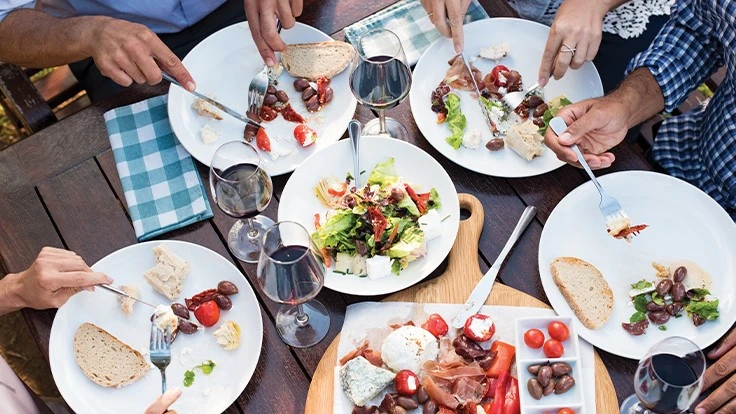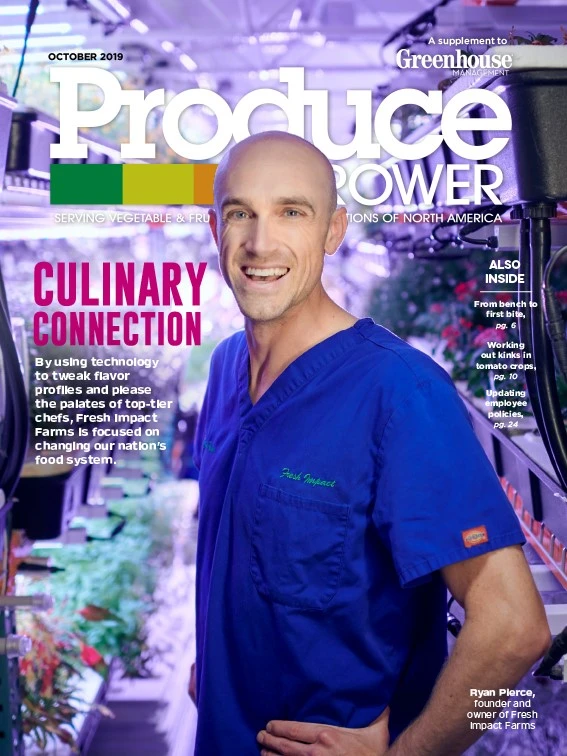
_fmt.png)
Everyone wants to make a first great impression, and that’s no different for professional chefs. They typically get one opportunity to make that great impression with a customer who sits down to dine with them. Otherwise, that diner may never come back. Freshness, flavor and appearance from the first bite is crucial to the success of any chef-driven restaurant.
With produce taking center stage for more and more restaurants and high-end chefs, the produce they offer needs to be fresh, flavorful and locally sourced. If you haven’t yet forged great partnerships with local chefs in your area, now’s a great time to start.
Tough market
If you’re not familiar with the restaurant scene in Dallas, where I live and do my eating out, let’s just say it’s serious business. We all eat out a lot here, but the restaurant industry is known to be quite carnivorous. A multitude of new restaurants pop up daily, only to be chewed up and spit out before you can finish a first read of their menu. To survive and thrive here as a serial-success chef, you must be a smart chef with great relationships — and know how to source great produce.
I wanted to get some personal insight directly from a chef’s perspective. Luckily, I have a friend who happens to be one of Dallas’ best-known restaurateurs and executive chefs. Jeana Johnson currently anchors CANVAS, a new up-and-coming restaurant and bar in Dallas, but has owned and launched several other prominent restaurant ventures here in Big D. I texted her and begged her to answer some questions about what she really wants, and needs, from her local produce farmers.
What’s new?
When it comes to current trends, Johnson tells me that she — and other chefs — are using all parts of a plant in different applications on a dish. “So, a shaved fennel salad would be uniquely garnished with the fronds [leaves] and some quick pickled stem,” she says. A root to shoot experience if you will.
She says that using heirloom varietals is also a trend that has been popular for a while but is sustaining. Johnson also sees an uptick in use of hybrid vegetables such as Caulilini. “Anything new you can bring to the plate that is interesting to the eye and new to the customer is easy to use as a wow factor in presentation,” she says.
Too hard to find?
When it comes to finding the right growers with which to partner, Johnson says it’s all about knowing where to look. When I asked her if she had regular troubles finding the right produce, she told me, “There really isn’t much that, if you are cooking seasonally and regionally, you can’t source locally.” The message there is, the locally available produce — by season — is what is driving what local diners find on their plates. That means you as the grower are in charge when it comes to what chefs are working with in their kitchens. Ultimately you are driving the food trends. However, if a chef must know where to look, as Johnson says, that might mean you’re making yourself too hard to find.
As a wholesale produce grower, you might not think that public marketing is necessary, or your responsibility. Not so. We all share the same end consumer. Elevating your brand awareness, both to the end consumer and the local food community, is a must for building your brand reputation and commercial sales. The easier you are to find and relate to, the better your commercial relationships will be.
Johnson offers a key piece of strategic advice for small growers: band together with other small local farmers so you have backup sources for your orders.
Grow to scale
From Johnson’s perspective, challenges working with local growers often come down to a matter of scale. She finds that small local growers often can’t support the volume needs of a larger production. These volume limitations do cause her to pause, she says, when deciding to list and name a specialty product on a menu — or not. “For example,” Johnson says, “if I was buying a baby lettuce mix from a large-scale produce company, I wouldn’t necessarily be able to call the farm out by name. But I could count on them being able to source the product at all times from a large bank of sources.”
Risky business
Johnson also points out other challenges of highlighting specific farmers and their produce on her menus. “If something happened at the farm (they lose a greenhouse to weather) or they simply cannot grow as much as I need, I now have an entire dish that cannot be produced with a named product,” Johnson says. Her choice often comes down to going against her ethics of using locally sourced produce to using large-scale production for peace of mind — or not offering specific produce at all. Neither are good options in Johnson’s opinion.
On this point, Johnson offers a key piece of strategic advice for small growers: band together with other small local farmers so you have backup sources for your orders. Johnson insists that good farm-to-farm relationships are key to success. “If I had the surety that my farmer had a great relationship with a fellow farmer, should he/she not be able to provide sufficient product, it would make it much easier to use their [named] product” she says.
So, it’s not just your farm-to-chef relationship that matters, but also your grower-to-grower community.
Building great long-term relationships with local chefs does mean making the effort to cater to and customize their needs, when you can. Johnson recommends asking your chefs what they really like and want to buy. “Inventive chefs are typically ahead of the curve on what they would like to see,” she says. Consider doing special grows of specific seasonal product for your valued chef partners.
The key to success for any business often comes down to networking and cross industry partnerships. As food markets continue to hyper-localize, getting to know great chefs in your area may be key to your future growth.

Explore the October 2019 Issue
Check out more from this issue and find your next story to read.
Latest from Produce Grower
- TIPA Compostable Packaging acquires paper-based packaging company SEALPAP
- Divert, Inc. and General Produce partner to transform non-donatable food into Renewable Energy, Soil Amendment
- [WATCH] Sustainability through the value chain
- Growing leadership
- In control
- The Growth Industry Episode 8: From NFL guard to expert gardener with Chuck Hutchison
- 2025 in review
- WUR extends Gerben Messelink’s professorship in biological pest control in partnership with Biobest and Interpolis





